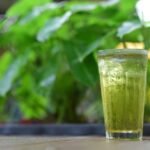Maintaining a healthy gut microbiome is crucial for digestion, immunity, and mental wellbeing. Yet, few realise that our microbial community responds dynamically to the foods we eat each season. By aligning your diet with nature’s calendar—using fresh, in-season produce—you can feed beneficial bacteria and support long-term gut health. Drawing on principles from our “Hydration and Health” foundation and “Seasonal Eating for Better Health,” this guide shows how to synchronise seasonal eating with microbiome care.
Why Seasonality Matters for the Microbiome
Your gut ecosystem thrives on diverse fibres and phytonutrients. Seasonal foods vary in their fibre types and bioactive compounds, offering a rotating “menu” that encourages microbial diversity. As explained in our “Foods That Fight Inflammation and Chronic Disease” guide, dietary variety is key to reducing chronic inflammation linked to dysbiosis.
- In spring, bitter greens act as prebiotics, nurturing microbes that produce short-chain fatty acids.
- Summer’s juicy fruits supply polyphenols that promote beneficial Lactobacilli growth.
- Autumn root vegetables deliver resistant starch, feeding butyrate-producing bacteria.
- Winter citrus and crucifers provide bioflavonoids and glucosinolates, supporting gut barrier integrity.
This approach complements strategies from our “Organic vs Conventional Foods” analysis, since pesticide-free, seasonal produce often has higher microbial and nutrient profiles.
Spring Gut Tonic: Bitter Greens & Fresh Herbs
Key Ingredients
- Dandelion greens, rocket, endive: Bitter prebiotics that stimulate bile flow and feed Bifidobacteria.
- Fresh parsley and mint: Essential oils that support microbial diversity and soothe digestion (see “Reading Food Labels” for additive-free herb choices).
- Wild garlic: A spring staple providing fructans that fuel beneficial microbes.
Spring Gut Salad Recipe
- Toss 100g mixed bitter greens with chopped parsley, mint, and edible wild garlic leaves.
- Add 50g sliced radishes and a handful of pea shoots from our “Seasonal Eating” guide.
- Drizzle with olive oil and lemon juice, referencing our “Heart-Healthy Diet” for optimal fat choices.
- Sprinkle with toasted pumpkin seeds to introduce plant-based omega-3 and minerals from our “Vegetarian Nutrition for Teenagers” insights.
This raw, fibre-rich salad introduces new prebiotics and diversifies your microbial diet every spring.
Summer Refresh: Polyphenol-Rich Berries & Fermented Sips
Key Ingredients
- Blueberries and raspberries: High in anthocyanins that stimulate Akkermansia muciniphila, linked to healthy metabolism (“The Science Behind Mediterranean Diet and Longevity”).
- Watermelon: Provides hydration and citrulline, which supports blood flow and microbiome function (“Hydration and Health”).
- Kombucha or kefir: Natural probiotics that help maintain microbial balance, as discussed in our “Gut Health 101” series.
Summer Berry-Kombucha Smoothie
- Blend 150g mixed berries with 100ml plain kefir or kombucha.
- Add 1 tablespoon ground flaxseed for resistant starch and omega-3 from our “Omega-3 Fatty Acids” guide.
- Top with fresh mint and serve chilled.
The combination of live cultures and polyphenols provides dual support: fermented probiotics and seasonal antioxidants.
Autumn Support: Roots, Resistant Starches & Hearty Ferments
Key Ingredients
- Sweet potatoes and parsnips: Natural resistant starches that feed butyrate-producing microbes (“Foods That Fight Inflammation”).
- Beetroot: Betalains reduce gut inflammation and promote microbial diversity.
- Sauerkraut and kimchi: Fermented cabbage from our “Food Safety in the Kitchen” guidance, providing live cultures and lactic acid bacteria.
Autumn Root Veg Bake
- Cube 1 sweet potato, 1 parsnip, and 1 beetroot. Toss in olive oil, thyme, and garlic.
- Roast at 200°C for 30–35 minutes until tender.
- Serve alongside 50g sauerkraut or kimchi to introduce diverse probiotics.
This warm, fibre-rich meal supports SCFA (short-chain fatty acid) production crucial for colon health.

Winter Resilience: Citrus, Crucifers & Bone Broths
Key Ingredients
- Oranges and grapefruits: Vitamin C and pectin, a prebiotic that nourishes Bifidobacteria (“Managing Type 2 Diabetes Through Diet”).
- Broccoli, Brussels sprouts: Glucosinolates converted by gut microbes into anti-inflammatory compounds (“Foods That Fight Inflammation”).
- Bone broth: Gelatin and collagen that support gut lining integrity, as recommended in our “Sports Nutrition” article for recovery.
Winter Gut Recovery Soup
- Simmer 500ml bone broth with chopped broccoli florets and shredded Brussels sprouts.
- Add zest and segments of 1 orange for flavour and pectin.
- Season with turmeric and black pepper from our anti-inflammatory spices guide.
- Garnish with fresh parsley.
This comforting soup delivers nutrients and prebiotic fibres that soothe and strengthen the gut.
Practical Meal Planning Tips
- Rotate Seasonal Staples: Follow our “Seasonal Eating for Better Health” menu structure to ensure you consume spring, summer, autumn, and winter staples in rotation.
- Combine Prebiotics and Probiotics: Pair fermented foods from our “Gut Health 101” series with seasonal prebiotic sources in every meal.
- Mindful Preservation: Freeze or ferment excess seasonal produce using methods from “Meal Prep Mastery” to maintain gut-healthy diversity year-round.
- Balanced Plate Method: Use a half-plate of vegetables (seasonal focus), a quarter of lean protein or legumes (“Vegetarian Nutrition for Teenagers”), and a quarter of whole grains or starchy vegetables (“Mediterranean Diet Meal Planning”).
- Stay Hydrated: Complement these gut-supporting foods with plain water or herbal teas, following guidelines in “Hydration and Health.”
When to Seek Professional Help
Persistent digestive discomfort, bloating, or irregular bowel habits despite dietary adjustments warrant evaluation by healthcare providers or registered dietitians. Tailored gut-health plans, including possible stool analyses, can optimise your personalised seasonal nutrition strategy.
By integrating the freshest seasonal foods with targeted prebiotic and probiotic sources—and cross-referencing our expert guides on hydration, meal prep, and diet-specific strategies—you can cultivate a resilient gut microbiome all year round.






